Hedda Sterne’s Recommended Books
December 19, 2017

The extraordinary artist Hedda Sterne, who passed away in 2011 at the age of 100, was a passionate reader. We highlight some of the books she loved in the context of her life and work.
Sterne called her beloved books “sustenance,” “crutches,” “mentors.” She read, as she put it, for “confirmation.” As the year winds down with its best lists, we wanted to offer Sterne’s refreshingly timeless recommendations.
Born Hedwig Lindenberg in 1910 in Bucharest, Sterne enthusiastically puzzled out her first books in German, French, and Romanian, and later on in English. She read Dostoyevsky at 11. When her vision was affected by macular degeneration in the mid-1990s, she continued to make art and read with the aid of a powerful magnifying glass. At the age of 95, focused as she was on drawing and reading, she said she was spending her days as pleasurably as she had as a child.
Regarding her taste in books, Sterne tended toward fiction with minutely-observed depictions of the human psyche and nonfiction about creativity, consciousness, and the planet. Her reading shows her to have had a deep ethical and environmental sensibility. What she found in books enhanced her sense of wonder, social responsibility, and appreciation for the mysterious workings of beauty. As such, the books she admired seem a particularly good choice to return to at the end of this tumultuous year.
As a life-long habit, Sterne wrote down quotes from the books she was reading on the pages of her sketchbooks, in letters, and on scraps of paper. These particular books come recommended by way of her 40-year correspondence with her goddaughter, the children’s book author Claire Nivola. All have withstood the test of time, so to speak, and are still readily available.
FICTION
Jakob von Gunten, by Robert Walser
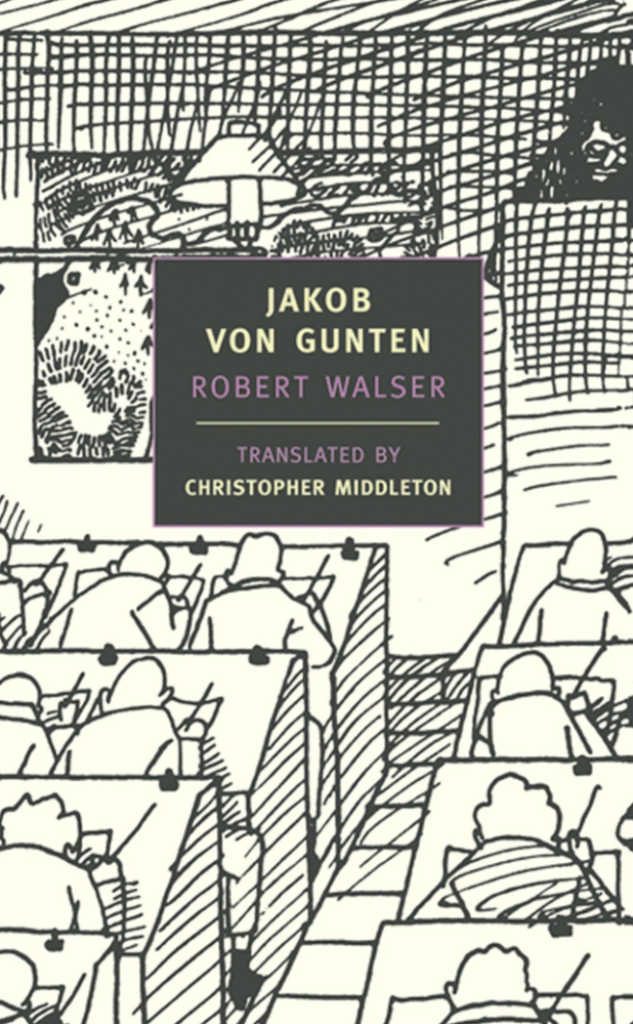
The Swiss writer Robert Walser was born in 1878. In the first years of the 20th century (before being interred in an asylum), he published four novels, as well as poetry and essays. By the year 2000, when New York Review Books resurrected Jakob von Gunten, English language readers had generally forgotten Walser’s work.
Drawing from Walser’s own experience attending a school for butlers, Jakob von Gunten tells the story of a young man who runs away from his small, provincial hometown. He enrolls in a big city school called the Benjaminta Institute, which purports to train young men to become servants and butlers. In the form of diary entries, Jakob describes, among other things, the lessons in humility he learns there.
Sterne was reading this novel in 1996, a year full of her own sorrows. Among other things, her eyesight had begun to deteriorate pronouncedly. Proverbially hopeful, Sterne may have been drawn to Jakob’s resilience, since, as J.M. Coetzee wrote in a review of the novel: “There is in Jakob something of the hero of a traditional German folk tale, of the lad who braves the castle of the giant and triumphs against all odds.”
Sterne’s interest in Walser’s work has proved prescient of a general resurgence of interest in his writings. In her recommendation, she delightedly quoted Walser:
“But I can do without nature. But doesn’t one then do without God too? To know that goodness, bare and sublime, is hidden somewhere, somewhere in the mists, and to revere it and adore it… with an ardor that is, as it were, totally cool and shadowy.”
Robert Walser
The Shadow Line: A Confession by Joseph Conrad
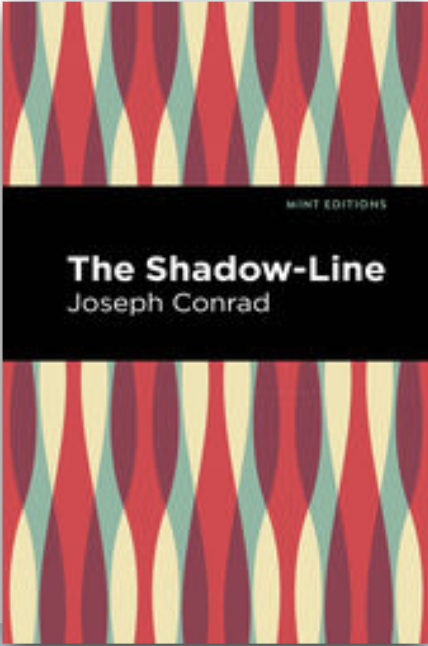
In 1999, not long after Sterne embarked on her last, great body of work, a series of drawings she called Ghosts, she was reading this late work of Conrad’s.
Like Jakob von Gunten, this novel is about a young man’s development, though unlike Jakob, it is told retrospectively from the point of view of a man recollecting the uncertainty and self-involvement of his younger self. He is thinking back to when he assumed a captaincy in the Orient, which brought with it formidable obstacles, a fear of madness, and a confrontation with the evil in the world. First published in 1916–17 in serialized form, the novel has variously been read as a story about maturity and experience, as a metaphor for World War I, and as a supernatural tale about the haunting of the present by the past.
Regeneration by Pat Barker

The first of a trilogy of novels set during World War I, Regeneration was nominated for the Booker Prize when it was first published in 1991. (The third novel in the trilogy, The Ghost Road, won in 1995.)
Regeneration is based on the true story of William Rivers, an army psychiatrist at Craiglockheart War Hospital who treated soldiers for shell shock (including the English writer Siegfried Sassoon, who appears as a major character in the book). Often seen as an anti-war novel, Barker writes in the tradition of other war novels by women and focuses on the domestic repercussions of the war. Sterne called it a “remarkable” novel.
Seven Gothic Tales by Isak Dinesan
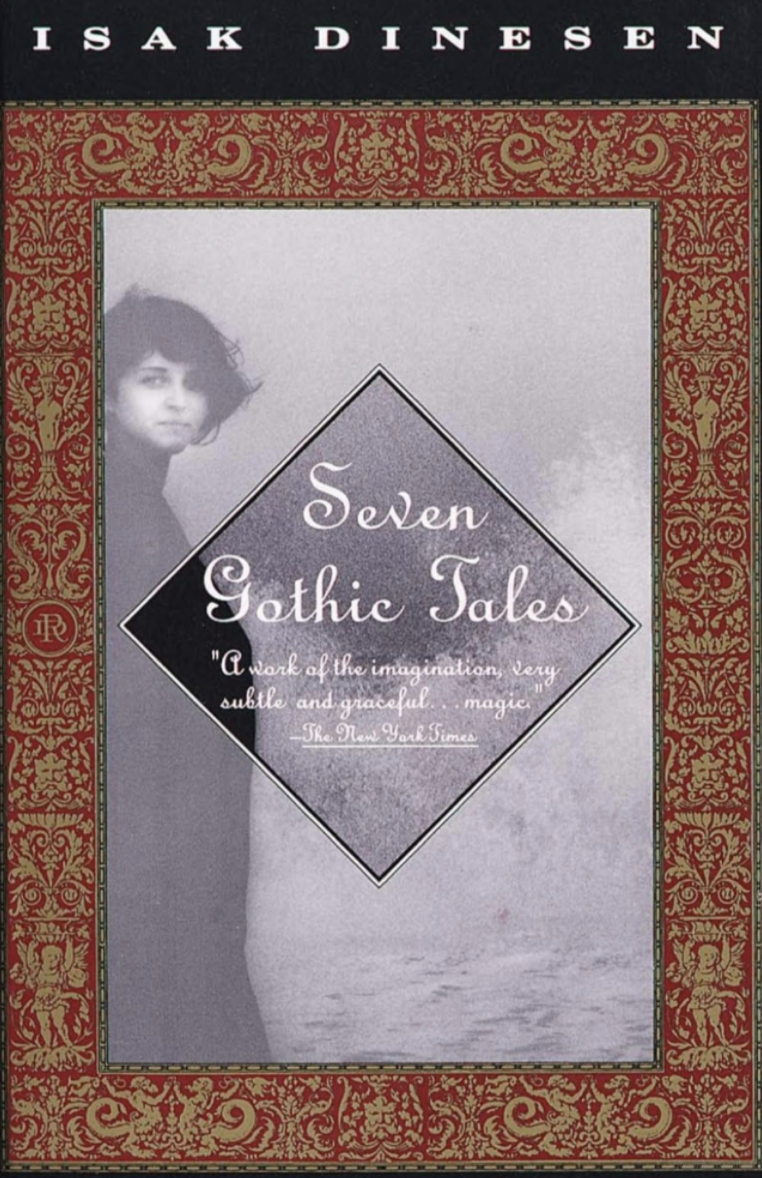
Sterne was a lifelong admirer of Dinesan’s work and especially loved Seven Gothic Tales. Lesser known than Out of Africa and Babette’s Feast, Tales was Dinesan’s first book and catapulted her to fame. It was published in 1934 by a small publisher after being rejected ad nauseam by others. Shortly afterwards, it was chosen as a Book-of-the-Month Club selection and, as Margaret Atwood related in a 2014 essay in the Guardian, took America by storm.
Awkward, eerie, labyrinthine tales told in the grand spirit of such writers as Goethe and Poe, Seven Gothic Tales is seen by some as evocative of female adolescence, yet found a surprising defender in John Updike, who wrote:
“Though Isak Dinesen’s leisurely and ornate anecdotes, which she furnishes with just enough historical touches to make the stage firm, have something in them of the visionary and the artificial, they are not escapist. From the sweeping flood of the first story to the casual and savage murder of the last, they face pain and loss with the brisk familiarity of one who has amply known both, and force us to face them, too.”
John Updike
NON-FICTION
The Poetics of Reverie: Childhood, Language, and the Cosmos by Gaston Bachelard
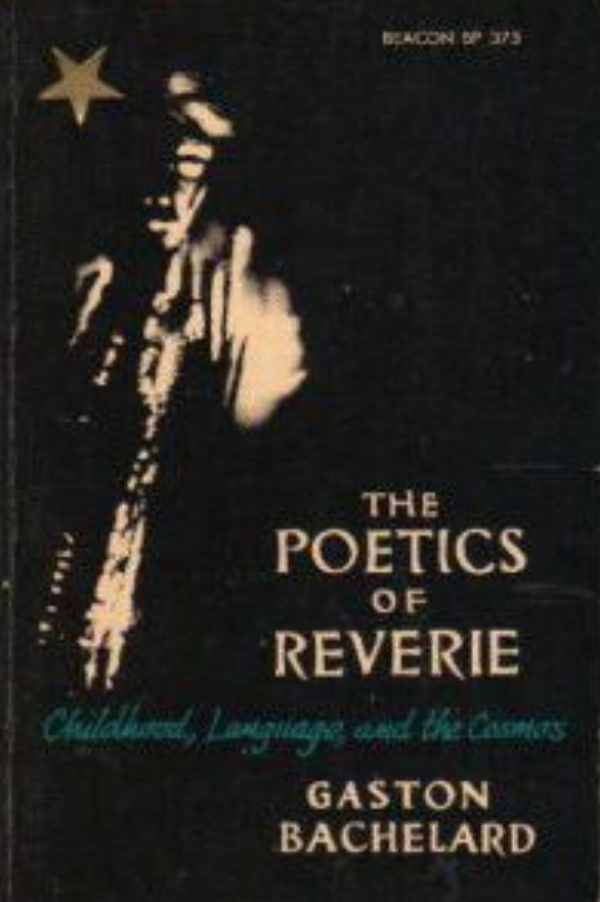
For two years beginning in 1929, Sterne studied art history and philosophy at the University of Bucharest, where she read the works of Husserl, Rosenov, Heidegger, Maritain, and others. Though she discontinued these studies in lieu of studio art training when she married her first husband, Frederick Stern, in 1932, she maintained a life-long interest in philosophy.
Sterne was especially drawn to what she called “mystic philosophy,” or philosophy that considered alternative states of consciousness, which is the purview of Bachelard’s The Poetics of Reverie. Published in 1960, Reverie was the last of Bachelard’s many studies on the imagination and explores the role of reverie on the act of creation.
Upon rereading it (in French) in the mid-1990s, Sterne said, “I have no adequate superlatives for it.”
The George Sand–Gustave Flaubert Letters
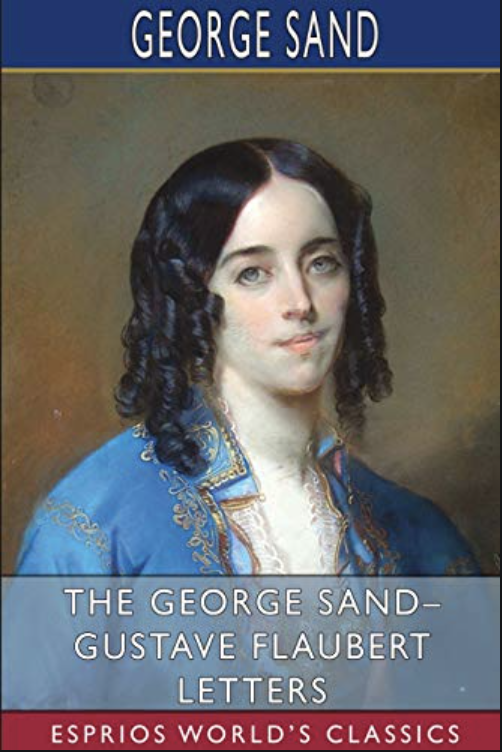
George Sand, a pseudonym for the French novelist Amantine Lucile Aurore Dupin, was born in 1804; Gustave Flaubert in 1821. She turned out novels every three months; he, dedicated to the pursuit of a pure style, spent five years drafting Madame Bovary. Despite the many differences between them, they became friends and exchanged more than 400 letters between when they met in 1863 and when Sand died in 1876.
In these letters, which are regarded by many as one of the most fascinating correspondences of the 19th century, Sand and Flaubert demonstrate the genius of their respective minds, the exceptional quality of their writing, and the texture of their friendship as they discuss politics, aging, the roles of women, the purpose of life, family, writing, and whether life and work ought to be connected or separated (she is for connection, he for separation). “At times, it seems that they are talking about our times,” Sterne said of them.
“I have never ceased to be young, if being young is always loving… Humanity is not a vain word. Our life is made of love, and to love no longer is to live no longer.”
George Sand, The George Sand-Gustave Flaubert Letters
The Spirit of Abstract Expressionism: Selected Writings by Elaine de Kooning
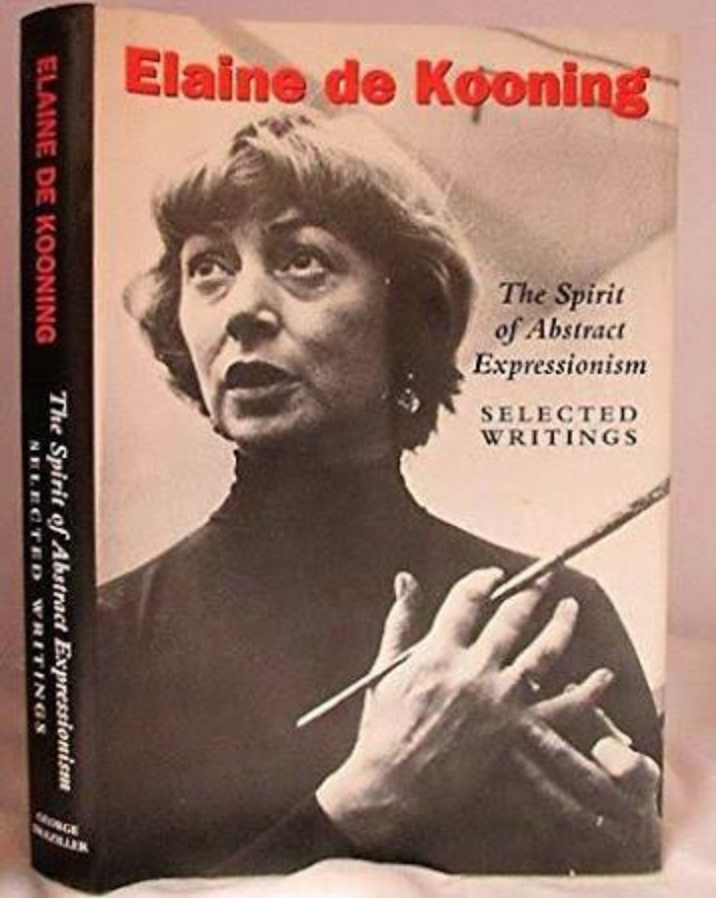
Elaine de Kooning (1918–1989), painter, art critic, and wife of Willem de Kooning, brought her personal knowledge of artists and technical insights about painting to her writings about art, which she published most often in the magazine Art News. This book brings together 28 of her articles, including profiles of such artists as Ashile Gorky, Franz Kline, Andrew Wyeth, and Jackson Pollock.
Sterne, who had been seen as a part of the Abstract Expressionist movement early in her career, and was well acquainted with Elaine de Kooning, considered this book essential to understanding post-War American art.
Matisse on Art, edited by Jack Flam
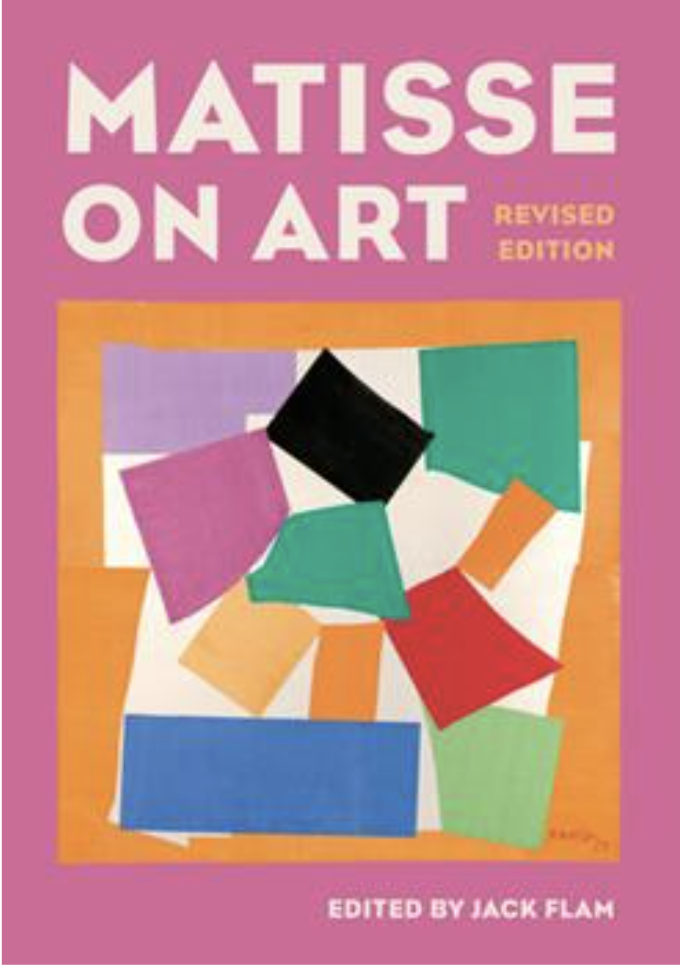
This book is a compilation of Matisse’s letters, interviews, and short statements. Sterne recommended it highly, and it’s also received unanimous five-star reviews on Amazon as being essential reading for anyone interested in Matisse or art more generally.
It’s easy to see why Sterne would have loved this book so much: in interviews and correspondence over the years, Sterne herself expressed views uncannily similar to Matisse’s, and she must have found in his statements the confirmation of a like-minded soul.
Like Matisse, Sterne had a strong desire to experience what he called “a sense of religious awe” toward life, an impulse he discusses often in this collection. Also like Matisse, Sterne believed in the importance of meditation and of art being derived from “a kind of meditation.” Finally, like Matisse, Sterne believed in the importance of listening with the “inner eye.” By the time she read this collection in 1997, she was making drawings that she would describe as Matisse does his, as coming from the revelation of something beyond the self.
The Spell of the Sensuous: Perception & Language in a More-Than-Human World by David Abram

Sterne once said she loved the following quote from David Bohm and F. David Peet’s book, Science, Order and Creativity: “Reality is inexhaustible and whatever we say a thing is, it is also something more and something else.”
She was fascinated by books about consciousness and perception, books that interrogated the notion of boundaries, separations, and divisions, be they between mind and body; science and art; self and other.
Abrams’s The Spell of the Sensuous (1996) was one such book. It explores Western civilization’s destructive estrangement from nature and posits a more sustainable vision of the human encounter with a “more-than-human world,” based on what Abrams learns from consulting a wide range of peoples (such as shamans in Nepal) and philosophical texts.
“Important… marvelous… More like a revelation,” Sterne said of the book, which has come to take its place as a crucial work in contemporary environmental thinking. Abrams has gone on to publish many more works and is the founder and creative director of the Alliance for Wild Ethics (AWE).
The Problem of Pain by C.S. Lewis
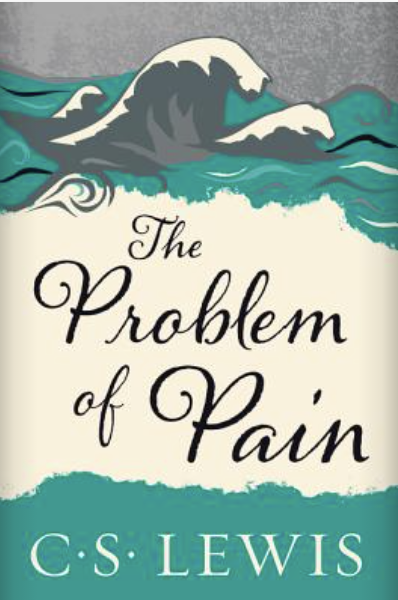
Although Sterne underwent some very serious traumas in her life—she faced discrimination as a Jew in Romanian society; lost her father, a language teacher, at the age of nine; barely escaped a roundup of Jews at her apartment building in Bucharest in 1941—she maintained an inveterately optimistic outlook on life. This optimism held, generally, as she grew older. Still, she became more preoccupied with the problem of pain and suffering in her last years of life, more sensitive to the world’s never-ending cycle of violence.
In trying to deal with the upset this violence caused her, she turned to C.S. Lewis’s iconic work, The Problem of Pain, a fascinating book that has been continuously in print since 1940. In this book, C.S. Lewis tries to address the question that many people have asked at some point in their lives: If God is good, why does he allow us to suffer? In doing so, he takes us into the paradoxes of life, the thickets of free will, and the mysteries of human relationships, where no easy answers lie:
“Try to exclude the possibility of suffering which the order of nature and the existence of free-wills involve, and you find that you have excluded life itself.”
C.S. Lewis

Leave a Comment